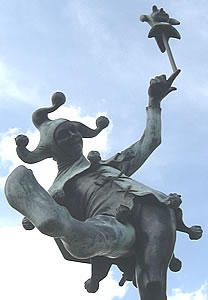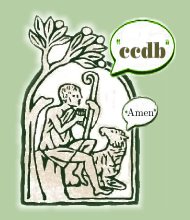Jimmy Akin Defines Torture
Throughout the War on Terror, Catholic bloggers and blog commentators have struggled with torture. As I've seen the flame-wars play our:
- We nearly all agree that torture is intrinsically evil.
- We virulently differ on a definition of torture and what specific acts constitute torture.
- A loud minority of us obscure the second step in an effort to blank check the current Administrations interrogation policies as licit.
Thus far we have seen that torture involves the infliction of pain but that not all infliction of pain counts as torture. There can be legitimate reasons for inflicting even extreme pain (as in the case of an emergency operation when anesthetic is not available) and there can be legitimate reasons to inflict pain in order to achieve legitimate behavioral goals (like getting people to obey the law).
I don't think that a definition of torture that focuses exclusively on the level of pain or on the purpose of the pain will be successful in capturing much of our commonsense understanding of torture (Parameter 1) and in picking out something that is intrinsically evil (Parameter 2).
Instead, I think that a more satisfying definition of torture can be developed by relating the quantity and purpose of the pain.
You'll note that one of the things that the Catechism said regarding punishment was "Legitimate public authority has the right and duty to inflict penalties commensurate with the gravity of the crime" (CCC 2266). This statement contains an insight that I think will allow us to develop a more robust and intellectually satisfying definition of torture.
The money quote:
Going this route seems to allow us to propose a definition that would capture a great deal of the things that our commonsense understanding would count as torture.
So let's try this definition and see how it works: The sin of torture consists in the disproportionate infliction of pain.
My one concern? Seems a tad convenient--misses some acts that common sense would dictate as De Facto acts of torture:
Some might be disappointed that the definition I have proposed does not automatically classify certain physical acts as torture but allows them to be or not be torture based on the situation.
Take waterboarding as an example. I would say that waterboarding is torture if it is being used to get a person to confess to a crime (it is not proportionate to that end since it will promote false confessions). I would also say that it is torture if it is being used to get information out of a terrorist that could be gotten through traditional, less painful interrogation means (it is not proportionate to the end since there are better means available). I would not say that it is torture if it is being used in a ticking time bomb scenario and there is no other, less painful way to save lives (it is proportionate since there is not a better solution). And I would not say that it is torture if it is being used to train our own people how to resist waterboarding if it is used on them (this is apparently something we do, and it is proportionate on the understanding that there is no better way to help people learn to resist waterboarding).
I'm sorry, but I don't buy that. Can the simulation of drowning in any way ever be a proportionate infliction of pain? If so, then what's to stop other equally morally revolting methods from passing the disproportionate smell test?
Jimmy Akin's definition has potential as a concept to clarify the definition of torture for the legitimate seekers of said definition. I think the application of this definition to specific controversial acts, however, is wanting. If we start using it to justify the unjustifiable, then we've simply reinvented Proportionalism and forgotten Veritas Splendor.
Labels: Catholic Social Teaching, Christianity in Society, issues and controversies





















<< Home